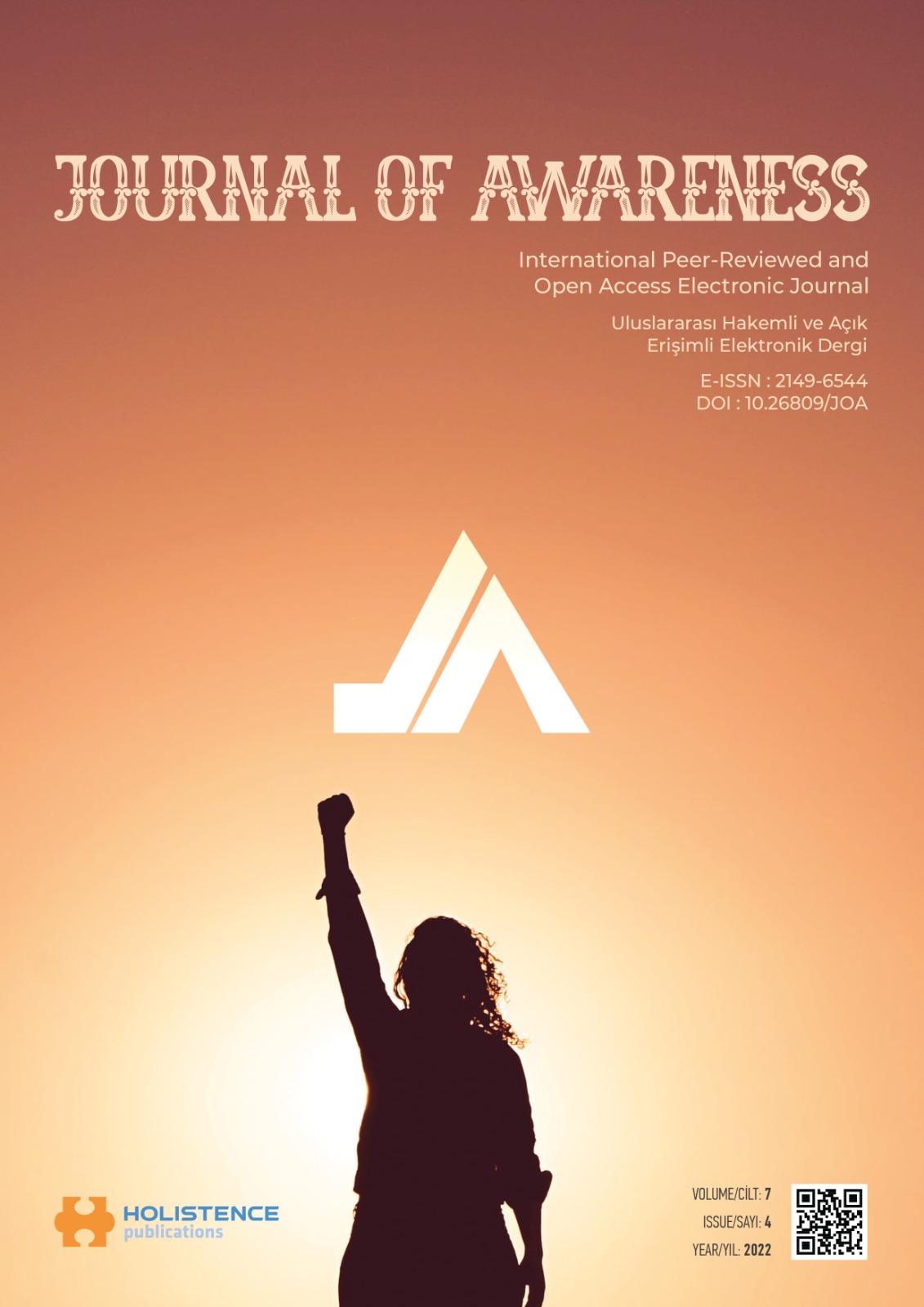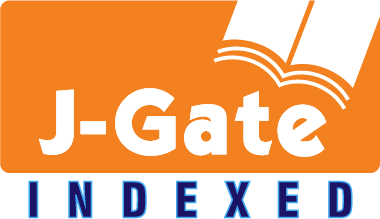The relationship between quality of life and education: An assessment on Turkey
DOI:
https://doi.org/10.26809/joa.7.4.06Keywords:
Quality of Life, Education, Türkiye, PandemicAbstract
Education is one of the most important subject areas of our lives. The coronavirus pandemic we have been experiencing for the last two years has reminded us of this situation very well. This health tragedy experienced by the whole world has created a serious chaos in education. The education life of many children was interrupted and gained a different quality. There were countries that failed to adapt to this very painful process, as well as those who managed well. It can be stated that the most important factor that reveals this result is the quality of life. The concept we call quality of life expresses a phenomenon consisting of multidimensional, subjective, and objective indicators. It includes many factors such as health, education, politics, transportation, economy, as well as how people perceive them and their level of satisfaction. In this context, it can be claimed that countries with high quality of life indicators are also in good standing in the field of education and attach great importance to education. This is actually an interaction.
As the education conditions and level improve, this will certainly reflect on the quality of life. Our living conditions and outlook on life are largely shaped by the education we receive. In the context of all this, what is the situation of Turkey? How do we stand in relation to education and quality of life compared to other countries? The answers to all these questions are important in order to understand how
important and place education is in the quality of life in Turkey. In this study, after mentioning the importance of education in quality of life, we will evaluate the relationship and status of education-quality of life in Turkey.
Downloads
References
AKRANAVİČİŪTĖ, D., & RUŽEVİČİUS, J. (2007). Quality of Life and Its Components Measurement. Engineering Economics, 52(2), 43-48.
BM (2021a, Kasım 22), İnsani Gelişme İndeksi-Genel Ülke Sıralamaları. https://hdr.undp.org/en/content/ latest-human-development-index-ranking (Erişim Tarihi: 22.11.2022)
BM (2021b, Aralık 20), İnsani Gelişme Endeksi-Ülke Profilleri, https://hdr.undp.org/en/countries (Erişim
Tarihi: 22.11.2020)
CAMPBELL, A., CONVERSE, P.E., & RODGERS, W.L (1976). The Quality of American Life: Perceptions, Evaluations, and Satisfactions. Russell Sage Foundation.
CUMMINS, R. A. (1997). Assessing quality of life. R. I. Brown & R. I. Brown (Eds.), Quality of Life For People with Disabilities (ss. 116–150). Stanley Thornes.
CUMMINS, R. A. (1996). The Domains of Life Satisfaction: An Attempt to Order Chaos. Social Indicators
Research, 38, 303–328.
DIENER, E., & SUH, E. (1997). Measuring Quality of Life: Economic, Social And Subjective Indicators. Social Indicators Research, 40(1), 189-216.
EDGERTON, J. D., ROBERTS, L. W. & VON BELOW, S. (2012). Education and quality of life, K. C. Land, M.
J. Sirgy & A. C. Michalos (Eds.), Handbook of social ındicators and quality of life research, (ss. 265-296). Springer.
EDİSAN, Z., & KADIOĞLU, F.G. (2013). Yaşam Kalitesi Kavramının Antik Dönemdeki Öncülleri. Lokman
Hekim Journal, 3(3), 1-4.
EDİSAN, Z., & KADIOĞLU, F.G. (2011). Sağlıkla İlgili Yaşam Kalitesi Ölçekleri: Etik Açıdan Bir Değerlendirme. Türkiye Klinikleri Tıp Etiği-Hukuku-Tarihi Dergisi, 19(1), 8-15.
European Statistics (EUROSTAT). (2022, January 28).
Database: Quality of life, https://ec.europa.eu/eurostat/web/main/data/database
EUROPEAN STATISTICS (EUROSTAT). (2021, December 22). Quality of life indicators. Eurostat statistics explained, https://ec.europa.eu/eurostat/statisticsexplained/index.php/Quality_of_life_indicators
(Erişim Tarihi: 22.12.2022)
EVANS, D. R. (1994). Enchanging The Quality of Life in The Population at Large. Social Indiactor Research, 33(1), 47-88. https://doi.org/10.1007/BF01078958
FAYERS, P. M. & MACHIN, D. (2007). Quality of Life: The Assessment, Analysis and İnterpretation of Patient-Reported Outcomes. 2nd ed. John Wiley & Sons
FERRER, A. (2004). Hapiness Quantified: A Satisfaction Calculate Approach. Oxford University Press.
GIL-LACRUZ, M., GIL-LACRUZ, A.I., & GRACIA-PÉREZ, M. L. (2020). Health-Related Quality of
Life in Young People: The Importance of Education.
Health and Quality of Life Outcomes, 18, 187. https:// doi.org/10.1186/s12955-020-01446-5
GLATZER. W. (1987). Components of well-being. A.C. Michalos (Eds.). Living conditions and subjective
well-being, 1978-1984, (ss. 25-33), German Social Report.
GOLDBERG, J. & SMIH, J. (2007). The Effects of Education on Labor Market Outcomes, Revision of May
GREGORY, D., JOHNSTON, R., PRATT, G., WATTS, M., & WHATMORE, S. (2009). Quality of life. In Dictionary of Human Geography, 5th Edition, Wiley-Blackwell.
IONESCU, D. D. IONESCU, A. M., & JABA, E. (2013).
The Investments in Education and Quality of life. Journal of Knowledge Management, Economics and Information Technology, Special Issue (December), 141-158.
JAKİMOVSKİ, J. (2019). Education and Quality of Life. Eurasian Journal of Social Sciences, 7(3), 1-7
JAMIESON, A. (2007). Education and the Quality of Life in Later Years: Quality in Ageing. Journal of Policy, Practice and Research, 8(3), September, 15-23. https://doi.org/10.1108/14717794200700017
KHAN, H. & WİLLİAMS, J. B. (2006). Poverty Alleviation Through Access to Education: Can E-Learning
Deliver?, U21Global Working Paper No. 002/2006, 18 Pages.
LLERAS-MUNEY, A. (2005). The Relationship Between Education And Adult Mortality in The United States. Review of Economics Studies. 72(1), 189–221.
MACKENBACH, J. P. (2006, February). Health Inequalities: Europe in Profile. UK Presidency of the EU.
ORGANISATION FOR ECONOMIC CO-OPERATION AND DEVELOPMENT (OECD). (2015). How’s
Life? 2015 Measuring Well-being. OECD Publishing.
ORGANISATION FOR ECONOMIC CO-OPERATION AND DEVELOPMENT (OECD). (2022, January 22). OECD Better Life Index. https://www.oecdbetterlifeindex.org/#/11111111111
PFEIFER, A. (2007). Good Practices in Basic Education in Latin America, Second OECD World Forum on Statistics, Knowledge and Policy, Istanbul, Turkey.
POWDTHAVEE N. (2010). Does Education Reduce The Risk of Hypertension? Estimating The Biomarker
Effect of Compulsory Schooling in England. Journal of Human Capital. 4(2), 173–202.
POWDTHAVEE, N., LEKFUANGFUB, W. N., & WOODEN, M. (2015). What’s The Good of Education on
Our Overall Quality of Life? A Simultaneous Equation Model of Education And Life Satisfaction For Australia. J Behav Exp Econ. 54(February): 10–21
QUALİTY OF LIFE RESEARCH UNIT. (2015). The quality of life model, University of Toronto, http://
sites.utoronto.ca/qol/qol_model.htm (Erişim Tarihi: 11.12.2021).
RADOVANOVIĆ, I., BOGAVAC, D., CVETANOVIĆ, Z., & KOVAČEVIĆ, J. (2017). Quality of Life - lifelong
Education Platform. Universal Journal of Educational Research, 5(12A), 188-195.
ROSS, C. E. & WILLIGE, M. V. (1997). Education and the Subjective Quality of Life. Journal of Health and Social Behavior, 38(September), 275-297
SAPANCALI, F. (2009). Toplumsal Açıdan Kentsel Yaşam Kalitesi. Altın Nokta Basın Yayın
SCHULLER, T. (2007, June 30). Understanding the social outcomes of learning, Second OECD World Forum on Statistics, Knowledge and Policy, Istanbul, Turkey.
SILES, M. A. (2009). The Causal Effect of Education on Health: Evidence From The United Kingdom. Economics of Education Review. 28(1), 122–128.
SLAVNİC S., KOVACHEVİC, J., RADOVANOVİC V. & JACHOVA, Z. (2015). The quality of life of deaf and hard of hearing students in boarding schools. 6th International Conference: Improving the Quality of Life of
Children and Young People, (ss. 569-579), Ohrid, http:// www.erf.untz.ba/aktuelnosti/poziv.pdf (Erişim Tarihi: 11.12.2021).
STIGLITZ, J. E., SEN, A. K., & FITOUSSI, J. P. (2009). Report by the Commission on The Measurement of
Economic Performance and Social Progress. www. stiglitz-sen-fitoussi.fr (Erişim Tarihi: 27.02.2022)
STONE, A. A., KRUEGER, A. B., STEPTOE, A. & HARTER, J. (2008). Exploring the socio-economic gradient,
in daily colds and flu, headaches, and pain, Mimeo.
T.C. MİLLİ EĞİTİM BAKANLIĞI (2022, Ocak 11). Milli Eğitim İstatistikleri: Örgün Eğitim. 1997-2021. www.
meb.gov.tr (Erişim Tarihi: 11.01.2022)
T.C. MİLLİ EĞİTİM BAKANLIĞI (2021, Aralık 29). PISA nedir?. http://pisa.meb.gov.tr/www/pisa-nedir/
icerik/4 (Erişim Tarihi: 29.12.2021)
TORLAK E. S., & YAVUZÇEHRE S. P. (2008). Denizli Kent Yoksullarının Yaşam Kalitesi Üzerine Bir İnceleme. Çağdaş Yerel Yönetimler Dergisi, 17(2), 23-44.
TÜİK (2022a). Ocak 21). Ulusal Eğitim İstatistikleri Veri Tabanı (2008-2020), https://data.tuik.gov.tr/
Kategori/GetKategori?p=egitim-kultur-spor-ve-turizm-105&dil=1 (Erişim Tarihi: 21.01.2022)
TÜİK (2022b). Ocak 21). Ulusal Eğitim İstatistikleri Veri Tabanı (2008-2020), https://data.tuik.gov.tr/
Kategori/GetKategori?p=egitim-kultur-spor-ve-turizm-105&dil=1 (Erişim Tarihi: 21.01.2022)
UNICEF Innocenti Research Centre. (2002). A league table of educational disadvantage in rich nations. Innocenti Report Card No. 4. UN Children’s Fund.
UYSAL ŞAHİN, Ö. (2020). Yaşam Kalitesi Kamu Maliyesi Kalitesi İlişkisi: Avrupa Birliği ve Türkiye Üzerine Bir İnceleme. Rating Academy Publishing.
Downloads
Published
How to Cite
Issue
Section
License
Copyright (c) 2022 Holistence Publications

This work is licensed under a Creative Commons Attribution 4.0 International License.
When the article is accepted for publication in the Journal of Awareness, authors transfer all copyright in the article to the Rating Academy Ar-Ge Yazılım Yayıncılık Eğitim Danışmanlık ve Organizasyon Ticaret Ltd. Şti.The authors reserve all proprietary right other than copyright, such as patent rights.
Everyone who is listed as an author in this article should have made a substantial, direct, intellectual contribution to the work and should take public responsibility for it.
This paper contains works that have not previously published or not under consideration for publication in other journals.











